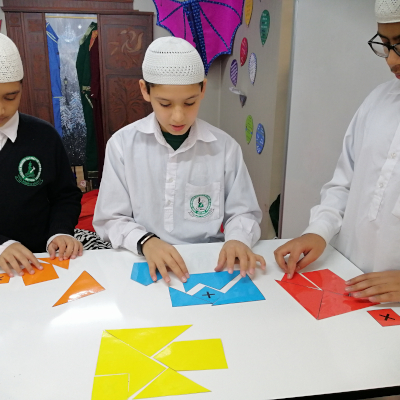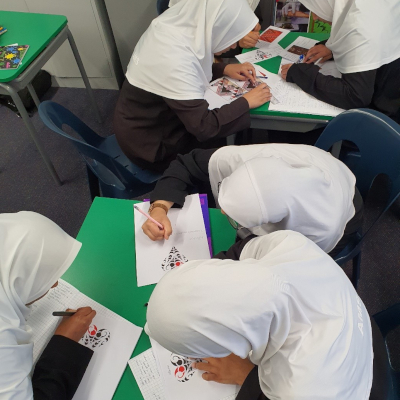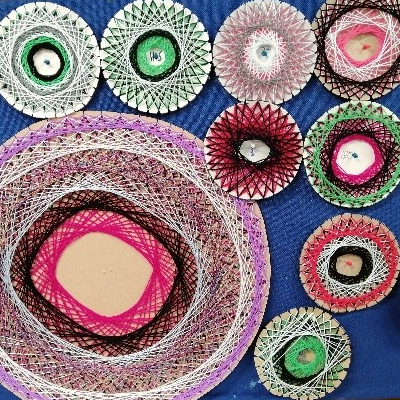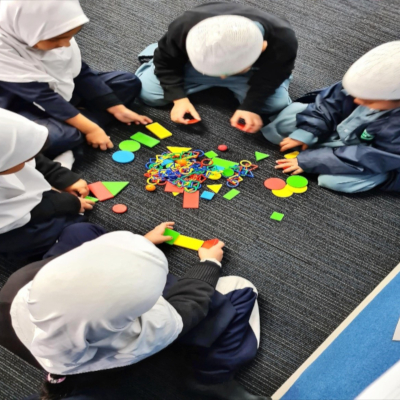Mathematics

Mathematics is the exploration and use of patterns and relationships in quantities, space, and time. Statistics is the exploration and use of patterns and relationships in data.
By studying mathematics and statistics, students develop the ability to think creatively, critically, strategically, and logically. They learn to estimate with reasonableness, calculate with precision, and understand when results are precise and when they must be interpreted with uncertainty.
Mathematics and statistics have a broad range of practical applications in everyday life, in other learning areas, and in workplaces.
The Mathematics and Statistics course is divided into three strands.
– Number and algebra
– Geometry and measurement
– Statistics
https://nzcurriculum.tki.org.nz/The-New-Zealand-Curriculum/Mathematics-and-statistics
Maths Student’s Activities
Primary
In Primary we believe strongly that Mathematics is best learnt through relating problems to the real world. By doing this, we are helping our learners to see the relevance of often-complex tasks in a way that is most likely to be engaging and memorable for them.
There are various sites and resources which have been developed to help teachers to plan, and for parents to gain knowledge to discuss mathematics and support their child. Most importantly these sites allow students to practice a skill or concept they have learnt on that day.
In the classes, we usually begin lessons with some games or activities to get the children’s brains warmed up.
Sometimes the games or activities are done in their maths books. There are also games played by the students which involve game boards, counters, dice and other hands-on materials.
We give importance in the revision of numerical knowledge, to help students to become more confident at recalling them, and using them to solve more challenging maths problems.
Students are given ‘hands-on’ materials in their lessons to help them grasp new concepts. These may include counters, cubes, base ten materials, tens frames, number lines or hundreds boards. This is essential for helping us to build a mental image of some of the tricky concepts we learn.
Not all work is done in the books. Some lessons require students to practice the skills and strategies that they have learned by completing activities on the class computers, iPads and laptops or by working in a group using chart paper or modelling books.
Intermediate
Years 7 – 8
Number and algebra
Use a range of additive and simple multiplicative strategies with whole numbers, fractions, decimals, and percentages. Record and interpret additive and simple multiplicative strategies, using, words, diagrams, and symbols, with an understanding of equality. Connect members of sequential patterns with their ordinal position and use tables, graphs, and diagrams to find relationships between successive elements of number and spatial patterns.
Geometry and measurement
Use linear scales and whole numbers of metric units for length, area, volume and capacity, weight (mass), angle, temperature, and time. Classify plane shapes and prisms by their spatial features. Represent objects with drawings and models. Use a co-ordinate system or the language of direction and distance to specify locations and describe paths. Describe the transformations (reflection, rotation, translation, or enlargement) that have mapped one object onto another.
Statistics
Conduct investigations using the statistical enquiry cycle: gathering, sorting, and displaying multivariate category and whole-number data and simple time-series data to answer questions, identifying patterns and trends in context, within and between data sets, communicating findings, using data displays. Investigate simple situations that involve elements of chance by comparing experimental results with expectations from models of all the outcomes, acknowledging that samples vary.
Years 9 – 10
Number and algebra
Use a range of multiplicative strategies when operating on whole numbers. Find fractions, decimals, and percentages of amounts expressed as whole numbers, simple fractions, and decimals. Know the relative size and place value structure of positive and negative integers and decimals to three places.
Form and solve simple linear equations. Generalise properties of multiplication and division with whole numbers. Use graphs, tables, and rules to describe linear relationships found in number and spatial patterns.
Geometry and measurement
Use appropriate scales, devices, and metric units for length, area, volume and capacity, weight (mass), temperature, angle, and time. Use side or edge lengths to find the perimeters and areas of rectangles, parallelograms, and triangles and the volumes of cuboids. Interpret and use scales, timetables, and charts. Relate three-dimensional models to two-dimensional representations, and vice versa. Communicate and interpret locations and directions, using compass directions, distances, and grid references. Use the invariant properties of figures and objects under transformations (reflection, rotation, translation, or enlargement).
Statistics
Plan and conduct investigations using the statistical enquiry cycle:
determining appropriate variables and data collection methods, gathering, sorting, and displaying multivariate category, measurement, and time-series data to detect patterns, variations, relationships, and trends, comparing distributions visually, communicating findings, using appropriate displays.
Evaluate statements made by others about the findings of statistical investigations and probability activities.
https://nzcurriculum.tki.org.nz/The-New-Zealand-Curriculum/Mathematics-and-statistics
Senior
NCEA level 1
Pre- Requisite : Students should have successfully completed up to level 5 of New Zealand Mathematics Curriculum to do NCEA Achievement Standards.
Course content : Level one Maths covers all three strands. Students are engaged in thinking mathematically and statistically. Students solve problems and model situations in Number and Algebra, Geometry and Measurement, and Statistics.
Students have the opportunity to achieve 10 Numeracy credits.
The course enables students to achieve course endorsement and prepares students for Level two Mathematics.
NCEA level 2
Pre-requisite: Students should have studied Algebra.
Course content: Level two Mathematics covers all three strands.
Students solve problems and model situations in Mathematics and Statistics. The course enables students to achieve course endorsement.
NCEA level 3
Pre-Requisite: Students should have studied Algebra at level 1.
Course content: Level 3 Mathematics covers both the strands of the curriculum:
Mathematics and Statistics.
Those students who require Calculus only externals for tertiary studies are offered all three external standards.
The course enables students to achieve course endorsement.




